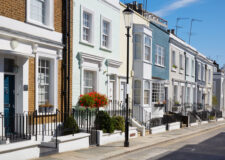Robert Nemeth on The National Theatre

We complain in Brighton & Hove that large projects take far too long to come to fruition. Schemes for Black Rock, Preston Barracks, the King Alfred, and the West Pier seem to be taking an eternity. The first proposal for a national theatre was made in 1848 – yet the National Theatre on London’s South Bank wasn’t opened until 1976. Hard hats had to be worn and no cameras were allowed on a recent behind-the-scenes tour of this foreboding building.
The National Theatre was built to the designs of Sir Denys Lasdun and Peter Softley alongside London’s Southbank Centre which already featured acres of exposed concrete. This no doubt softened the blow for traditionalists who may well have expected something a little less modern. It is no surprise that Brighton & Hove’s most similar offering, Hove Town Hall, opened in 1974. They really were buildings of their day – unseen before, unlikely to be seen again.

Just as I like Hove Town Hall, I am a huge fan of the National Theatre. I was going to suggest that their hard appearances make for an unwelcoming experience, which public buildings should wish to avoid, but I’m not so sure now that this is true. Just as castles and churches, with their ominous stone walls and spiky towers, are unfriendly on the outside yet secure within, both the National Theatre and Hove Town Hall evoke similar feelings.
As a fan of architecture, I think of the National Theatre as solely a building. It is easy to forget that the operation includes a large and successful theatre company (think War Horse etc). Our behind-the-scenes tour really hit this home when meeting all manner of people, hidden away around internal quadrangles, including make-up artists, wig-makers and set-designers.
The National Theatre has a similar name conundrum as the Dome locally. These days, what we all know as the ‘Dome’ is being marketed as the ‘Concert Hall’ within a Dome complex. The National Theatre, or Royal National Theatre as it became in 1988, actually consists of three individual auditoria – each called ‘theatre’. This no doubt confuses.
“The Olivier Theatre features a spinning stage that can be raised form a 20m-deep hole”
The largest of the three spaces – the Olivier Theatre – impresses most. It famously features a spinning stage that can be gracefully raised from a 20m-deep hole. The Olivier Theatre of course takes its name from Laurence Olivier, a former resident of Royal Crescent in Brighton, who was the National Theatre’s inaugural director.
www.buildingopinions.com
robert@buildingopinions.com
Follow me: @robert_nemeth




















